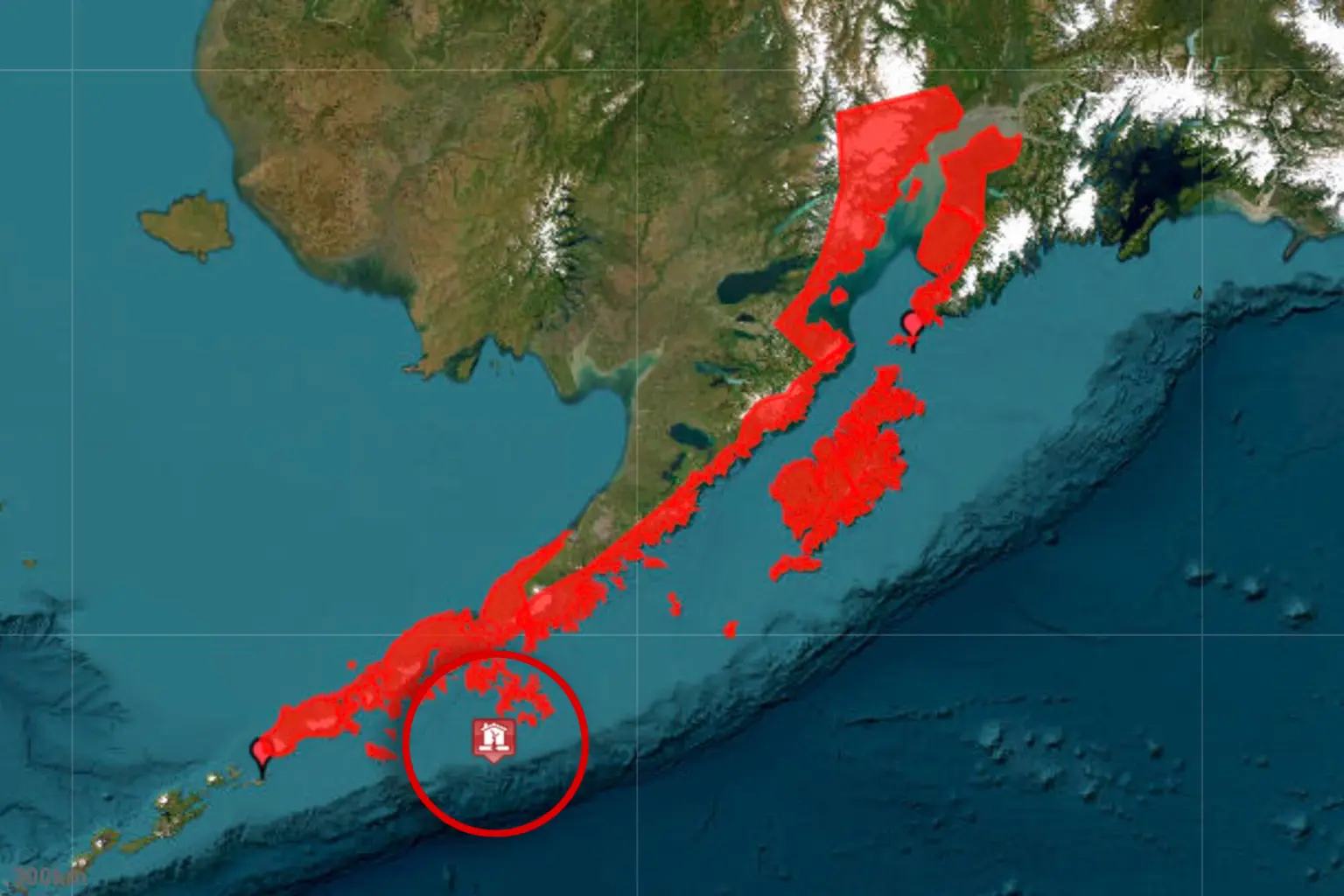Alaska Tsunamis: Nature’s Fury and How to Survive It
Alaska Tsunamis: Nature’s Fury
On July 16, 2025, a powerful magnitude 7.3 earthquake struck approximately 54 miles south of Sand Point, Alaska, shaking the region late Wednesday afternoon. The quake prompted the National Weather Service and NOAA’s National Tsunami Warning Centre to issue tsunami warnings for coastal areas south of the Alaska Peninsula, spanning from Kennedy Entrance to Unimak Pass, including Kodiak, Cold Bay, and Sand Point.
Officials urged residents to move to higher ground and evacuate low-lying areas—a precautionary step that saw communities like Homer Spit briefly shift toward elevated zones. Coastal buoys eventually recorded a small wave of about 0.2 ft (3 inches) at Sand Point, but no significant inundation was reported.

Within 90 minutes, the warning was downgraded to an advisory, and by early evening, it was fully cancelled. Authorities confirmed no major damage or injuries had occurred. While some aftershocks continued—one surpassing magnitude 5.2—the risk from waves had dissipated.
Alaska seismologists noted this is the fifth 7.0+ quake in the Aleutians region since 2020, highlighting ongoing tectonic activity along the Pacific “Ring of Fire”.
This event serves as a strong reminder of Alaska’s vulnerability to underwater earthquakes, which, although often benign in impact, can swiftly escalate into tsunami threats. Emergency systems functioned smoothly—issuing timely warnings and ensuring safety. Coastal residents are encouraged to stay alert, respect advisories, and maintain awareness of evacuation routes in quake-prone zones.
Alaska’s rugged beauty hides a volatile secret: It’s one of Earth’s most tsunami-prone regions. On July 16, 2025, a 7.2-magnitude earthquake near the Aleutian Islands triggered the state’s third tsunami warning in two years—a stark reminder that the “Big One” could strike anytime. For coastal communities, understanding these colossal waves isn’t academic—it’s life or death.
As a former disaster response planner in Anchorage, I’ve seen how tsunamis rewrite landscapes and lives. Here, we’ll unpack Alaska’s unique risks, the science behind the surges, and practical survival strategies you won’t find in generic guides.

Why Alaska? The Perfect Tsunami Storm
Alaska sits atop the Pacific Ring of Fire, where tectonic plates collide violently. The 1964 Great Alaska Earthquake (magnitude 9.2) unleashed a tsunami that reached 144 feet high in Valdez—still North America’s strongest recorded quake. Two factors make Alaska uniquely vulnerable:
- Subduction Zones: The Pacific Plate dives beneath the North American Plate at 2.3 inches per year, building colossal pressure.
- Fjord Geography: Narrow inlets amplify wave heights via “funneling.”
![Image: Diagram of Pacific Ring of Fire highlighting Alaska’s subduction zone]
Geological cross-section showing plate collision. Source: USGS
The 2025 Wake-Up Call: What Happened?
On July 16, 2025, a 7.2-magnitude quake struck the Aleutian Trench at 8:47 AM local time. While the tsunami warning was lifted after 90 minutes, coastal towns like Kodiak and Sand Point enacted evacuations. Key lessons:
- Speed Saves Lives: Waves can reach shore in under 30 minutes.
- Tech Gaps Persist: Some rural areas lost cell signals during alerts.

Image: 1964 tsunami damage in Anchorage with collapsed buildings and vehicles.
Alaska’s Deadliest Tsunamis: History’s Warnings
◼︎ 1964 Good Friday Earthquake & Tsunami
- Impact: 139 deaths across Alaska, Oregon, and California.
- Unforgettable Scene: In Chenega, a village was wiped out by a 90-foot wave. Only 23 of 75 survived.
◼︎ 1958 Lituya Bay Mega-Tsunami
- Record Wave: 1,720 feet—taller than the Empire State Building—triggered by a landslide.
Surviving the Surge: Your Action Plan
Before a Tsunami
- Know Your Zone: Use Alaska’s interactive evacuation maps.
- Pack a “Grab & Go” Kit: Include waterproof radios and altitude masks (smoke/debris risks).
During a Warning
- Don’t Wait: Head inland/uphill immediately.
- Vertical Evacuation: If trapped, climb reinforced concrete buildings (4+ stories).
After the Wave
- Avoid floodwaters (electrocution/hazardous waste risks).
- Listen to NOAA Weather Radio for “all-clear” alerts (USA Today, 2025).
Climate Change: Rising Threats
Warmer oceans and melting glaciers are destabilizing Alaska’s slopes. A 2023 University of Alaska study warns that submarine landslides (like 2015 Taan Fjord) could trigger tsunamis without earthquakes—a growing risk (NOAA Tsunami Research).
How Alaska’s Warning System Works
The state uses:
- DART Buoys: Deep-ocean sensors detecting pressure changes.
- Sirens + Mobile Alerts: Tested monthly in coastal towns.
Flaw? Rural villages lack sirens; SMS delays cost critical minutes.
Final Word: Respect the Ocean, Prepare to Act
Alaska’s tsunamis are inevitable, but tragedies aren’t. Bookmark the National Tsunami Warning Center, practice evacuation routes, and talk to neighbors. As Indigenous elders say: “The wave doesn’t argue.”
External Links:
